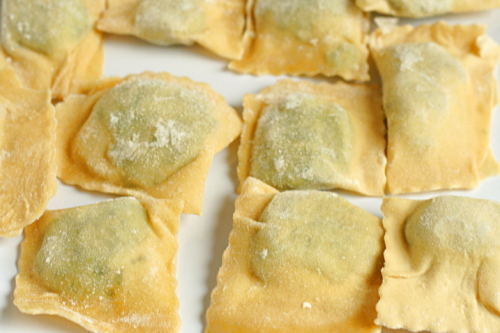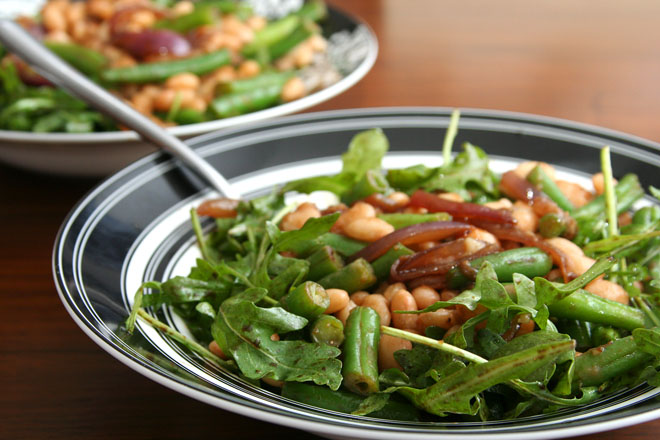My brother has a habit of giving out remarkably vague “recipes.” For example: “Put some pig or cow in the slow cooker with some liquid. Use a spice rub if you want. Cook until you get home from work, then give the fat to the dog and shred the meat.”
Um. Right.
I needed more information. Does the size of the roast matter? Whether it has a bone? I used pork shoulder, and Cooks Illustrated has a recipe for barbecue pulled pork, so I adapted some of their instructions – the ingredients and method for the spice rub – for this slow cooker version. I was reluctant to add liquid to the slow cooker liner with the meat, because I had some idea that it would dilute the flavor in the meat, so I added just a bit of water and some liquid smoke. I cooked it for about 10 hours, added some barbecue sauce, then cooked it for 1 hour longer.
Oh my gosh, it’s so good. I almost didn’t want to add barbecue sauce, because the meat tastes so good without it, but of course it was that much better once I added it. And it makes a ton of food. I’m going to guess that the pork shoulder I used, which was probably the smallest I could find, was about twenty servings. I froze most of it, and it reheats really well.
I learned a few things from this. For one, there’s no need to worry about liquid diluting the flavor of the meat – the meat exudes a surprising amount of liquid anyway. It’s best to add just a bit of water to help the slow cooker get the cooking started. Also, as far as cooking times go, longer seems to be better. So, as my brother said, start dinner cooking before you go to work, and when you get home 9 or 10 hours later, you’ll be just in time to shred the meat, add the barbecue sauce, and let that all cook together for a bit.
Overall, served with coleslaw, this makes for a fantastic meal. I know that crockpot pulled pork recipes are a dime a dozen, but trust me that this spice rub adds far more flavor than root beer ever could. Plus, it’s not much work at all, so with minimal effort you can stock your freezer with multiple nights’ worth of easy and tasty meals.
Update 9.21.08: Last time I made this, I used a pork shoulder that just barely fit in my crockpot; I think it was in the 7.5 pound range. After 8.5 hours, the pork wasn’t tender enough to be pulled, at least on the inside. So I recommend erring on the longer side of this cooking range, especially if you’re using a large roast.
Slow Cooker Pulled Pork (spice rub from Cooks Illustrated)
Spice Rub:
1 tablespoon ground black pepper
1-2 teaspoons cayenne pepper
2 tablespoons chili powder
2 tablespoons ground cumin
2 tablespoons dark brown sugar
1 tablespoon dried oregano
4 tablespoons paprika
2 tablespoons table salt
1 tablespoon granulated sugar
1 tablespoon ground white pepper
1 (6-8 pound) bone-in pork shoulder
½ teaspoon liquid smoke (optional)
2 cups barbecue sauce
1. Mix all spice rub ingredients in small bowl.
2. Massage spice rub into meat. Wrap tightly in double layer of plastic wrap; refrigerate for at least 3 hours. (For stronger flavor, the roast can be refrigerated for up to 3 days.)
3. Unwrap roast and place it in slow cooker liner. Add liquid smoke, if using, and ¼ cup water. Turn slow cooker to low and cook for 8-10 hours, until meat is fork-tender.
4. Transfer roast to cutting board; discard liquid in liner. “Pull” by tearing meat into thin shreds with two forks or your fingers. Discard fat.
5. Place shredded meat back in slow cooker liner; toss with 1 cup barbecue sauce, and heat on low for 30-60 minutes, until hot. Serve with additional barbecue sauce.

































































